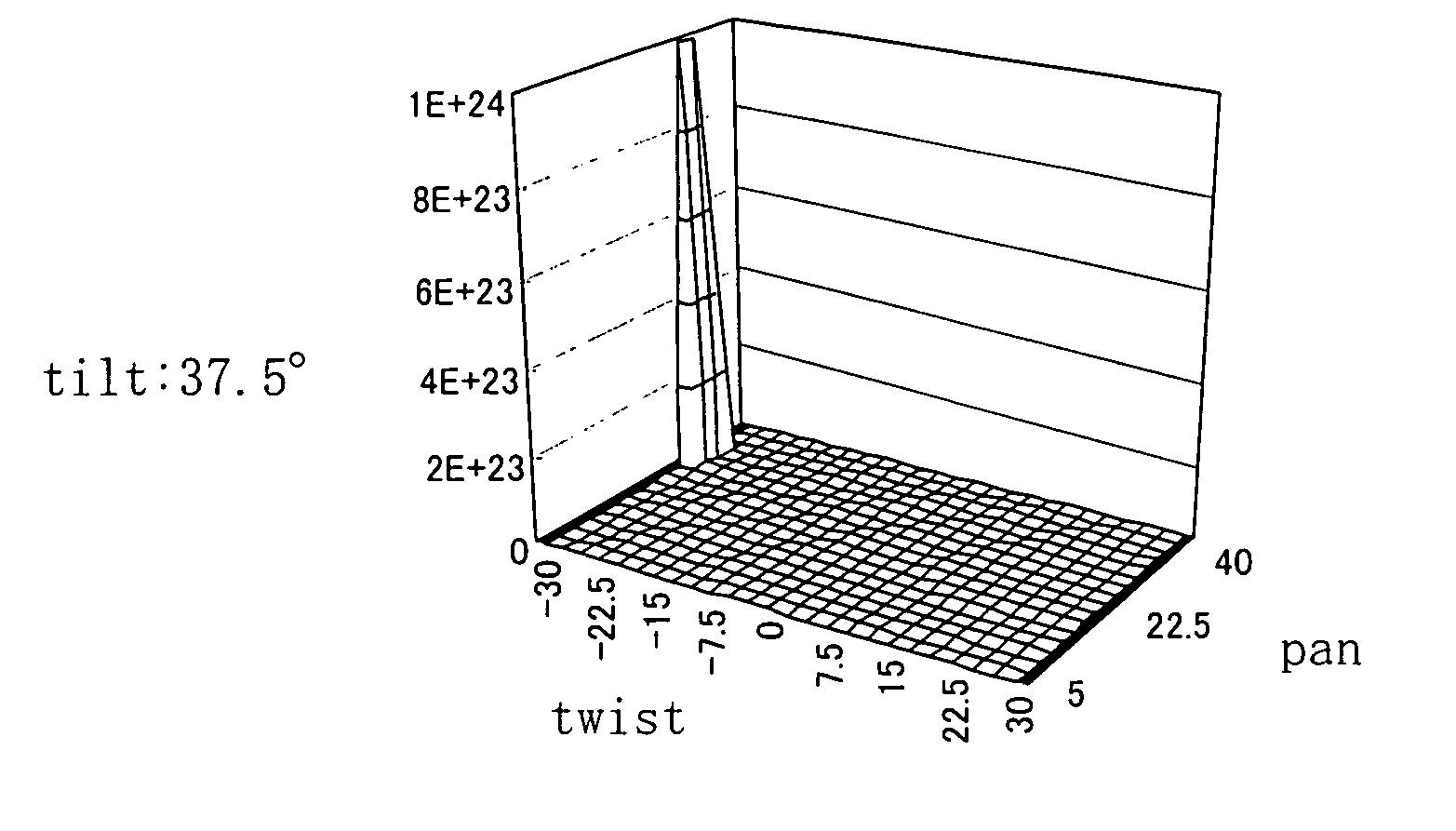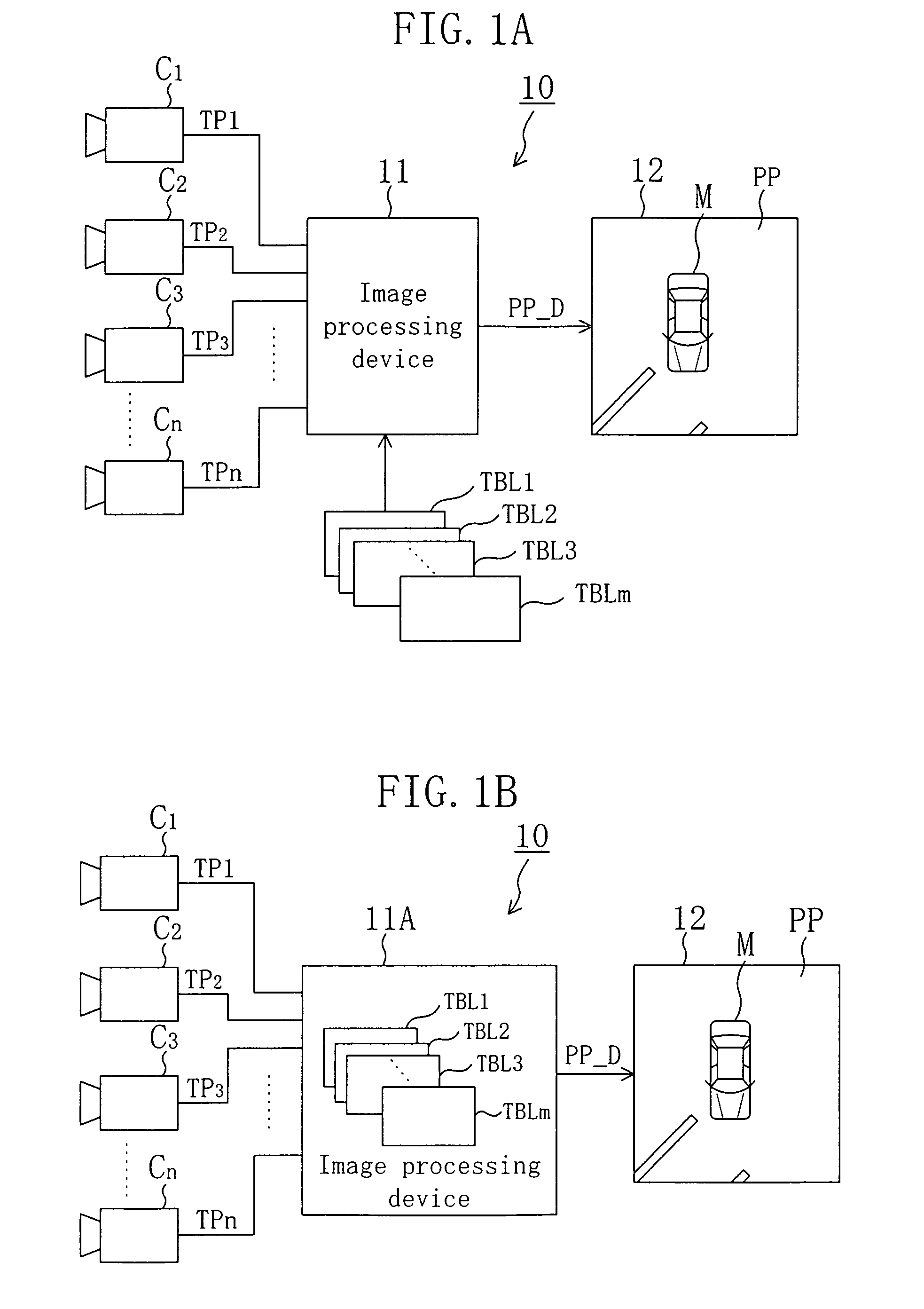Monitoring system, camera adjusting method and vehicle monitoring system
- Summary
- Abstract
- Description
- Claims
- Application Information
AI Technical Summary
Benefits of technology
Problems solved by technology
Method used
Image
Examples
first embodiment
[0064]FIG. 3 is a view illustrating how a rear monitoring camera is mounted in prior art. To monitor in more detail the vehicle in the rear direction, it is desired to capture a range as broad as possible from the vicinity just behind the vehicle to a place distant therefrom. In this connection, a camera having a very wide visual field of which field of view exceeds 110°, is recently increasingly used as capturing means for monitoring the vehicle in the rear direction. As shown in FIG. 3, however, even with a wide-angle camera, blind zones D deviating from the range to be captured are inevitably generated at both sides just behind a vehicle 21 as far as the field of view of the camera is smaller than 180°. Particularly, when those portions DS of the blind zones D located at inner parts with respect to the vehicle width, cannot be seen, an object present in the portions DS cannot be recognized on the captured image. This introduces the danger of causing trouble in view of safety when...
second embodiment
[0109]According to a second embodiment, it is supposed that the display mode of the vehicle outside display apparatus 10 shown in FIG. 1 is set to a rear wide visual field scene display mode.
[0110]FIG. 15(a) and FIG. 15(b) are views of a vehicle 1 and its surrounding. That is, FIG. 15(a) is a plan view and FIG. 15(b) is a side view. Shown in FIG. 15 are a front window Front—w of the vehicle 1, a rear bumper Rear—Bp, a trunk Tr and white lines 3A, 3B, 3C drawn on the ground surface. A pedestrian 2 (infant) stands behind the vehicle 1.
[0111]As shown in FIG. 15, two cameras C1, C2 forming a pair are disposed in close vicinity to each other at the rear part of the vehicle 1, the two cameras C1, C2 being turned slightly obliquely downward and rearwardly outward. There are also shown a range to be captured RC1 by the camera C1 and a range to be captured RC2 by the camera C2. A straight line L1 divides, into two equal portions, the overlapping portions of the ranges to be captured RC1, RC2...
third embodiment
[0117]According to a third embodiment, it is supposed that the display mode of the vehicle outside display apparatus 10 shown in FIG. 1 is set to a rear surrounding ground display mode. In this embodiment, the two cameras C1, C2 shown in the second embodiment are used as they are. The display mode of the vehicle outside display apparatus 10 can be switched from the rear wide visual field scene display mode to the rear surrounding ground display mode, and vice versa. Such switching can be made manually or automatically.
[0118]According to the third embodiment, the cameras C1, C2 are set such that each of the ranges to be captured by the cameras C1, C2 includes an area occupied at the time when the vehicle 1 is retreated at an optional wheel angle by a predetermined distance. Generally, this predetermined distance is preferably set to at least N1 / N2 of the vehicle length (N1 is an integer not less than 2, N2 is an integer not less than 3, and N1
PUM
 Login to View More
Login to View More Abstract
Description
Claims
Application Information
 Login to View More
Login to View More - R&D
- Intellectual Property
- Life Sciences
- Materials
- Tech Scout
- Unparalleled Data Quality
- Higher Quality Content
- 60% Fewer Hallucinations
Browse by: Latest US Patents, China's latest patents, Technical Efficacy Thesaurus, Application Domain, Technology Topic, Popular Technical Reports.
© 2025 PatSnap. All rights reserved.Legal|Privacy policy|Modern Slavery Act Transparency Statement|Sitemap|About US| Contact US: help@patsnap.com



